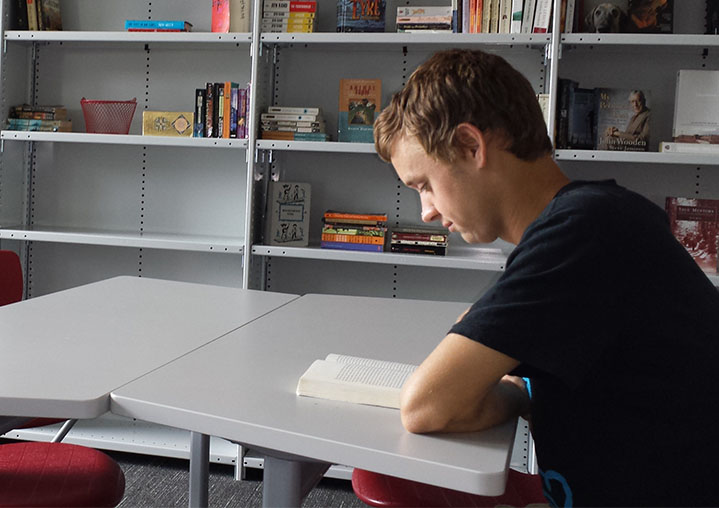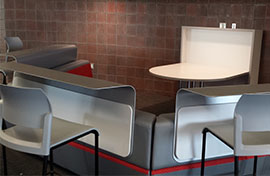Senior Austin Hendrick was enjoying some solitary reading in one of Northview High School’s new English classrooms. Quiet as it was, he felt excited.
“You came this year and it’s like, ‘Wow,’ ” the student body president said of the newly opened high school addition. “The whole first day, it’s like a castle here. It feels a little more like college – more prestigious.”
A collegial feel is one aim of the two-story, 18-classroom wing, which opened just in time for school this fall. It houses English, foreign-language and special-education classrooms, new teacher work rooms and counseling offices, and spiffy black-and-red lockers.
It’s all part of a $38 million expansion and renovation project that will be completed in the fall of 2014, when a new fitness center and pool are scheduled to open.
Students and teachers who last year studied in makeshift classrooms are enjoying the spacious hallways, cozy study nooks and high-tech classrooms of the new addition. It features comfy easy chairs and lobby-like areas where students can chill or study together – a so-called “third place” encouraging collaboration beyond the classroom.
“One of the (ideas) by design was to create a neighborhood where kids can gather informally and work on a project,” said Principal Mark Thomas.
 “It feels like an educational lounge,” said English teacher Audra Whetstone. “They’re really respectful of those areas.”
“It feels like an educational lounge,” said English teacher Audra Whetstone. “They’re really respectful of those areas.”
Voters Paid the Tab
The addition and other high school improvements were funded by two bond issues approved in 2011 and 2012 by Northview voters. Totaling $43.5 million, they funded four new classrooms at West Oakview Elementary, district-wide technology improvements and the high school project.
An $11.9 million bond-issue request for improved high school athletic facilities initially failed by two votes, but was approved the following spring.
initially failed by two votes, but was approved the following spring.
That support in tough financial times isn’t lost on the students, Thomas pointed out.
“They realize this community’s made an investment in their education, that the community cares enough to do this,” Thomas said.
The investment pays for not only bricks and mortar, but for wireless access and new technology that will help students learn, teachers say. Mimio interactive projectors, for instance, enable teachers to draw on whiteboards with digital “ink” and enable students to show  their work from their handheld computers. A common study area behind foreign-language classrooms provides a place to work together, practice dialogue or make up tests. Such areas give students more flexible places to learn and give teachers new ways to teach, staff members say.
their work from their handheld computers. A common study area behind foreign-language classrooms provides a place to work together, practice dialogue or make up tests. Such areas give students more flexible places to learn and give teachers new ways to teach, staff members say.
“Everyone sort of helps each other collaborate,” said guidance counselor Sarah Gammans. “This setting really fosters it. All the tools have changed.”
CONNECT









